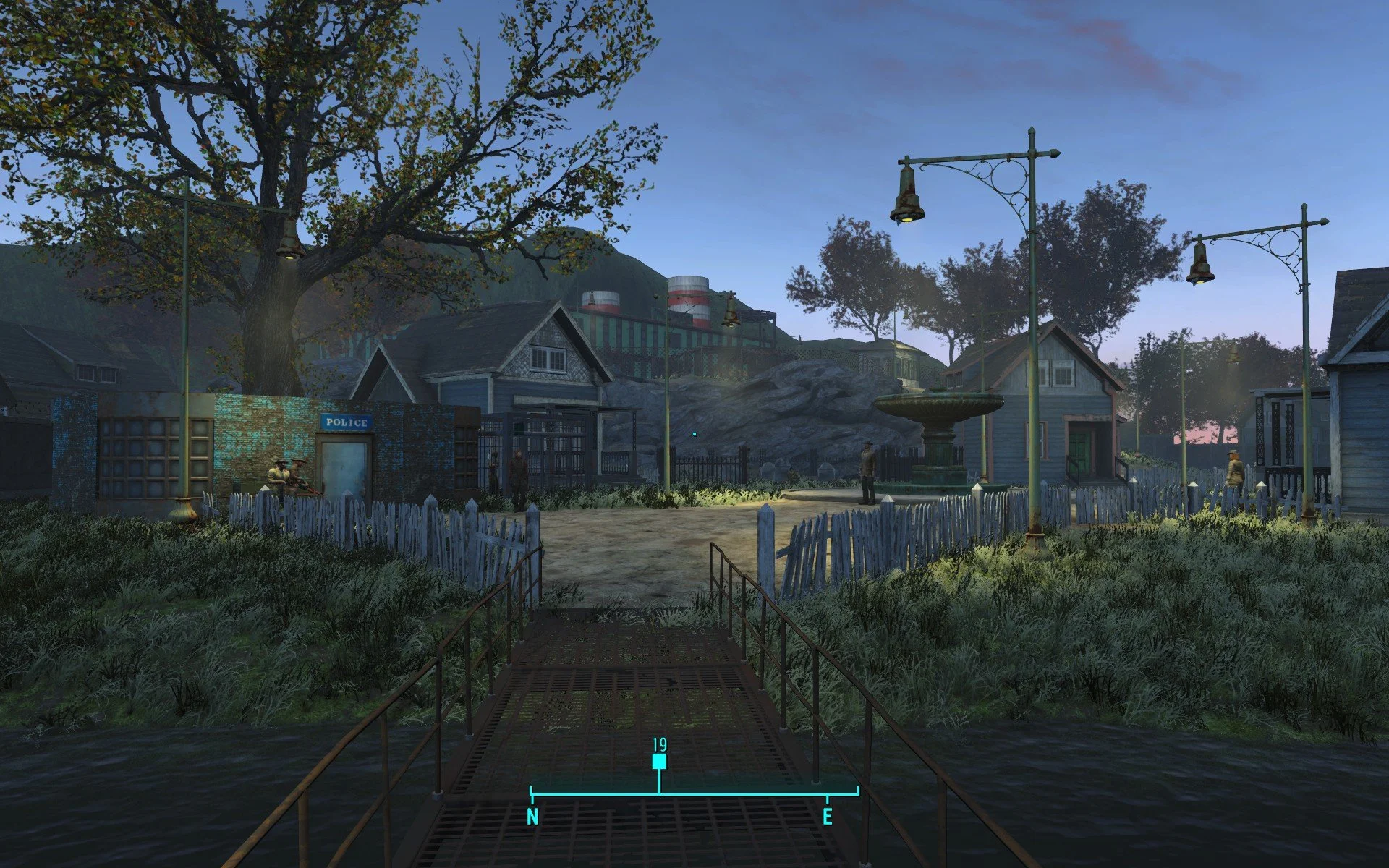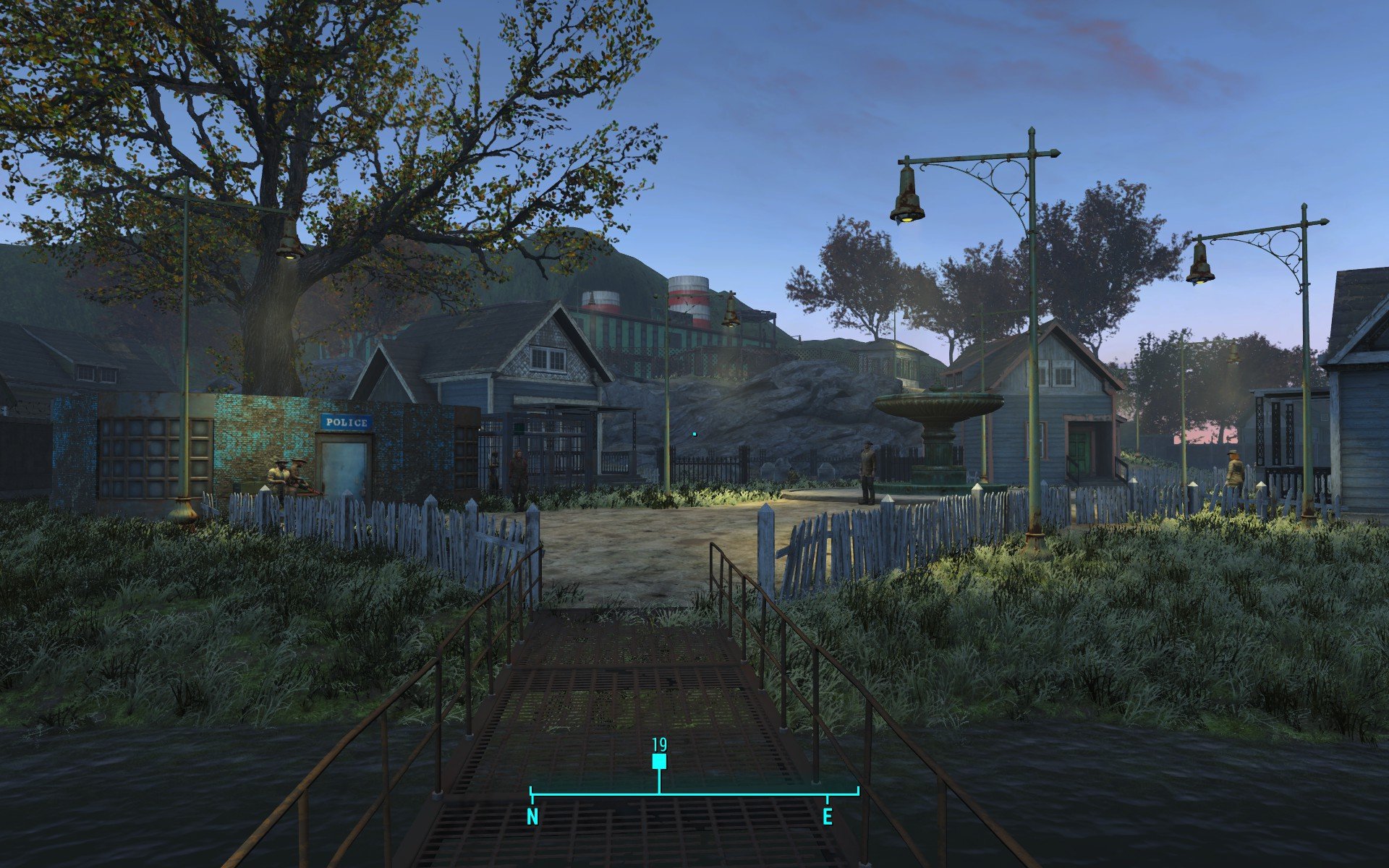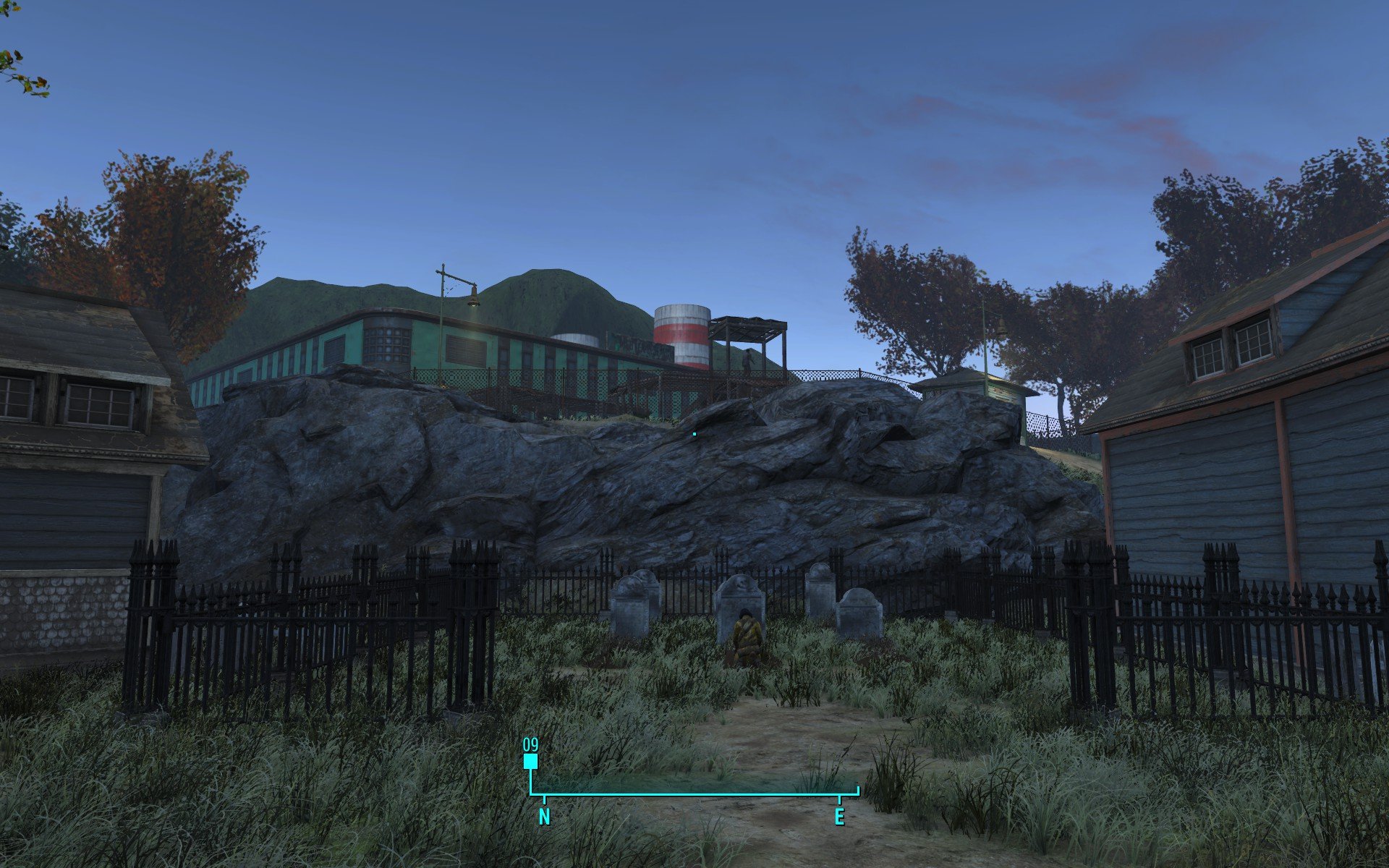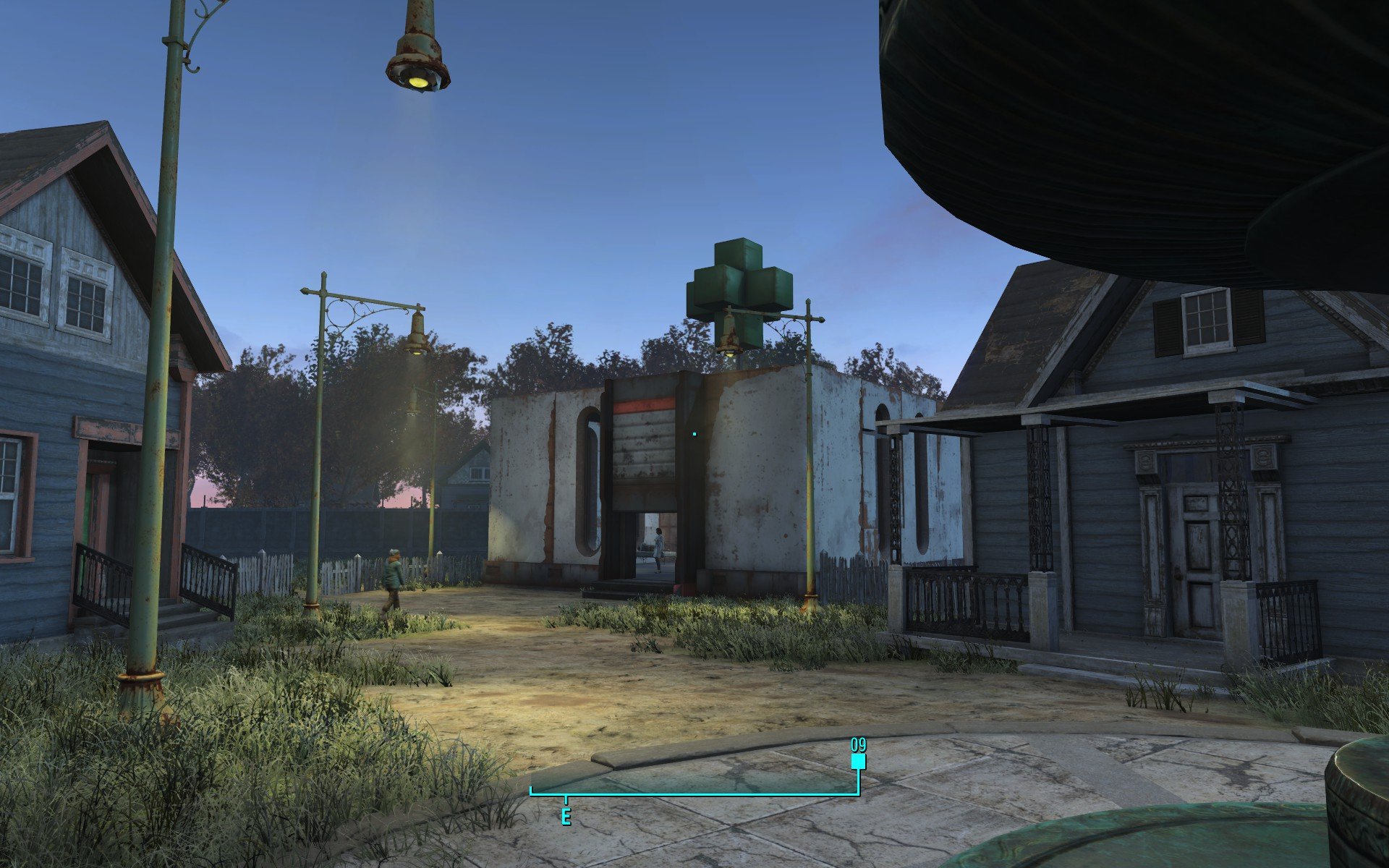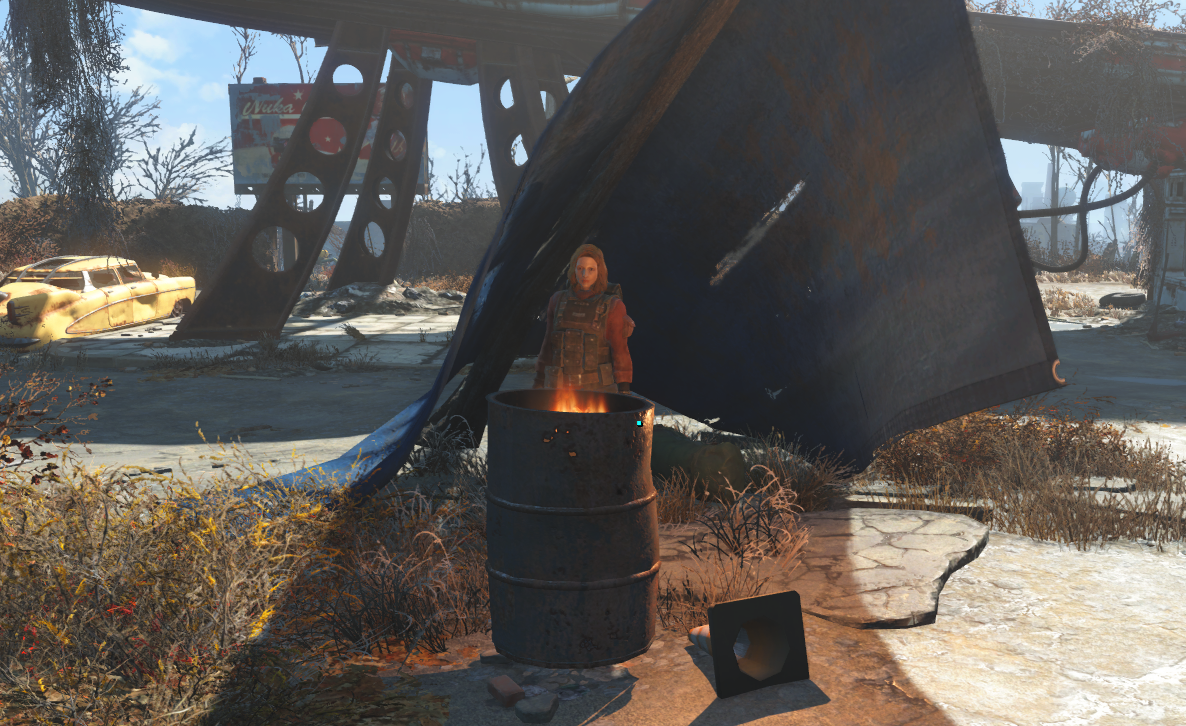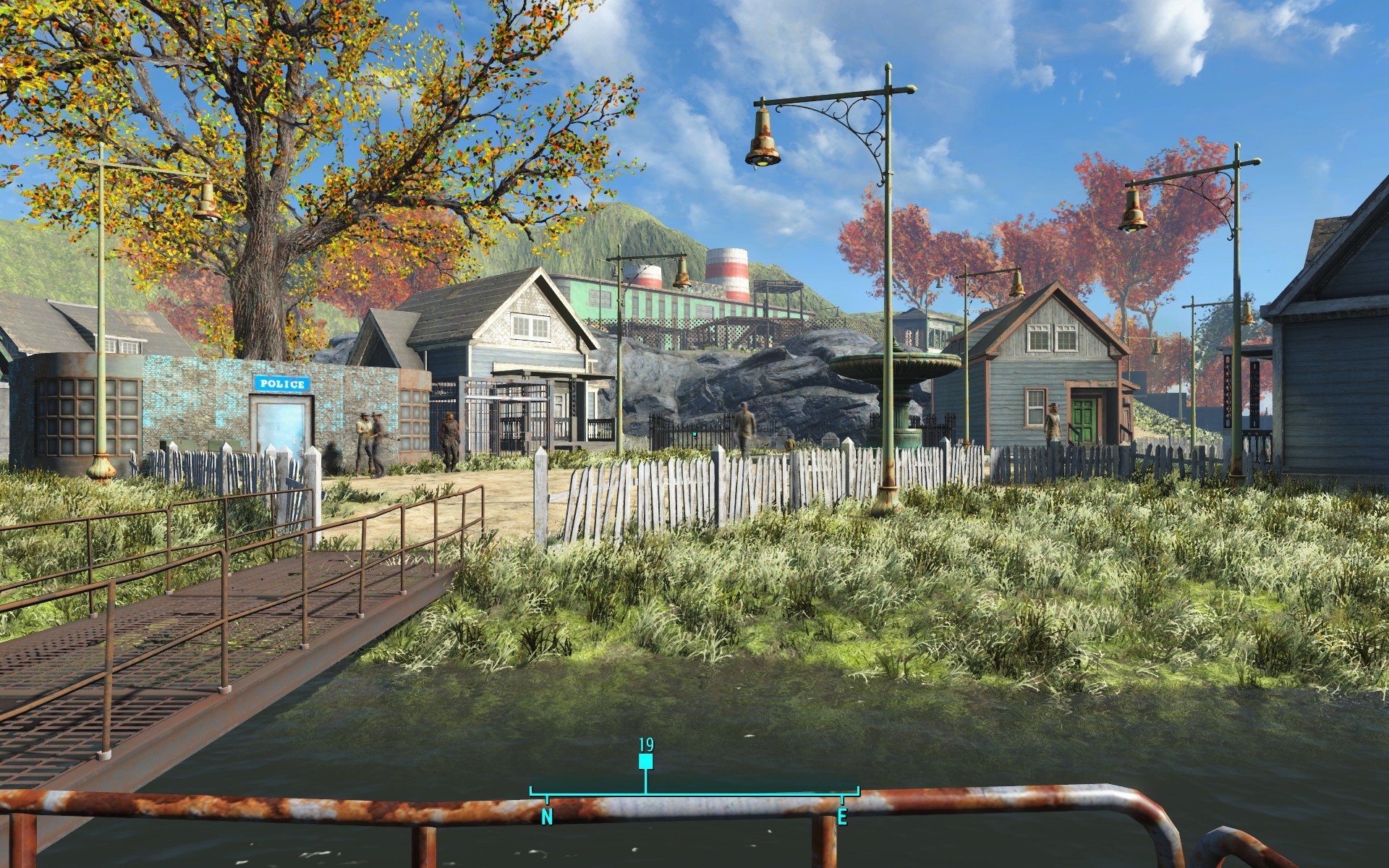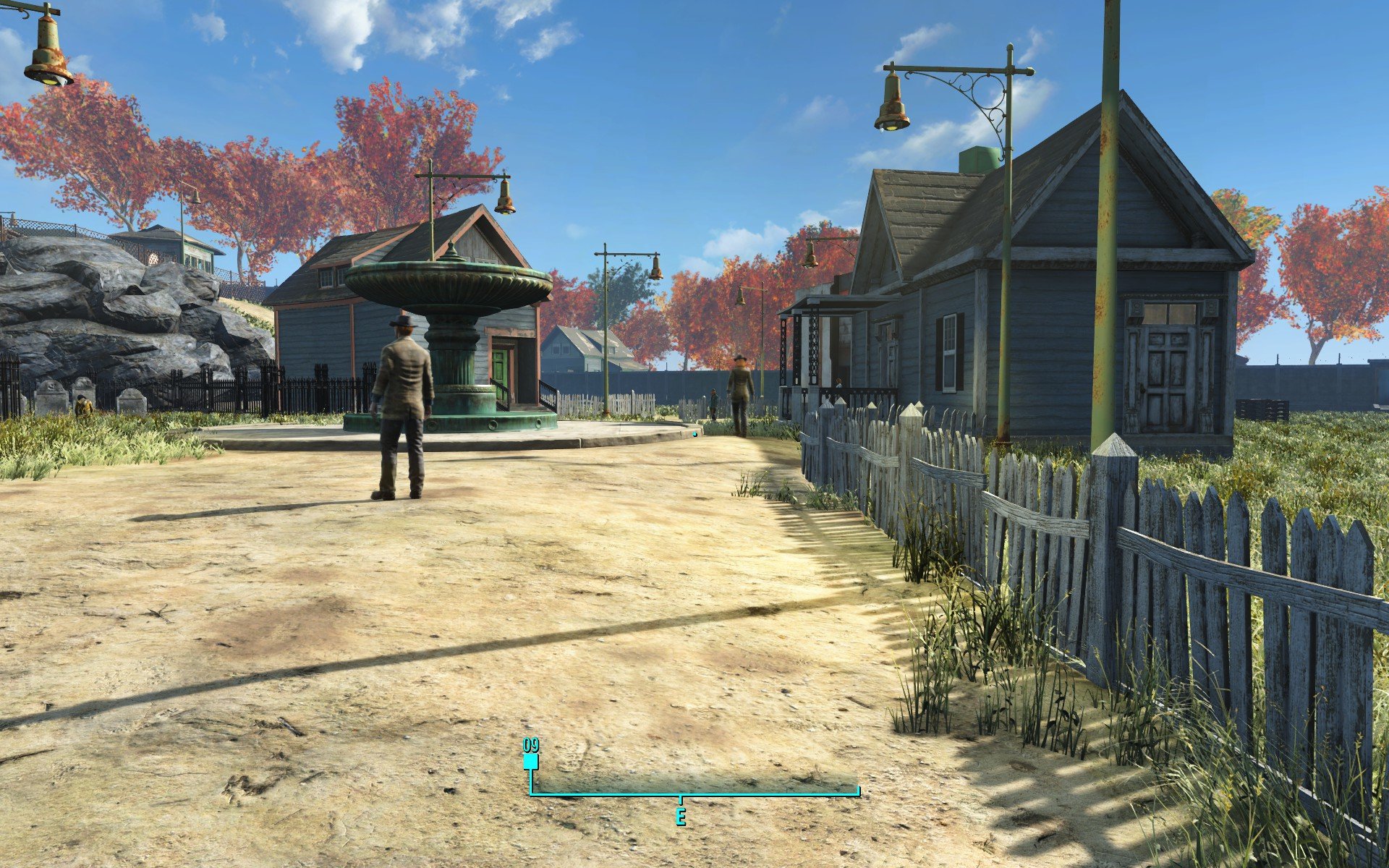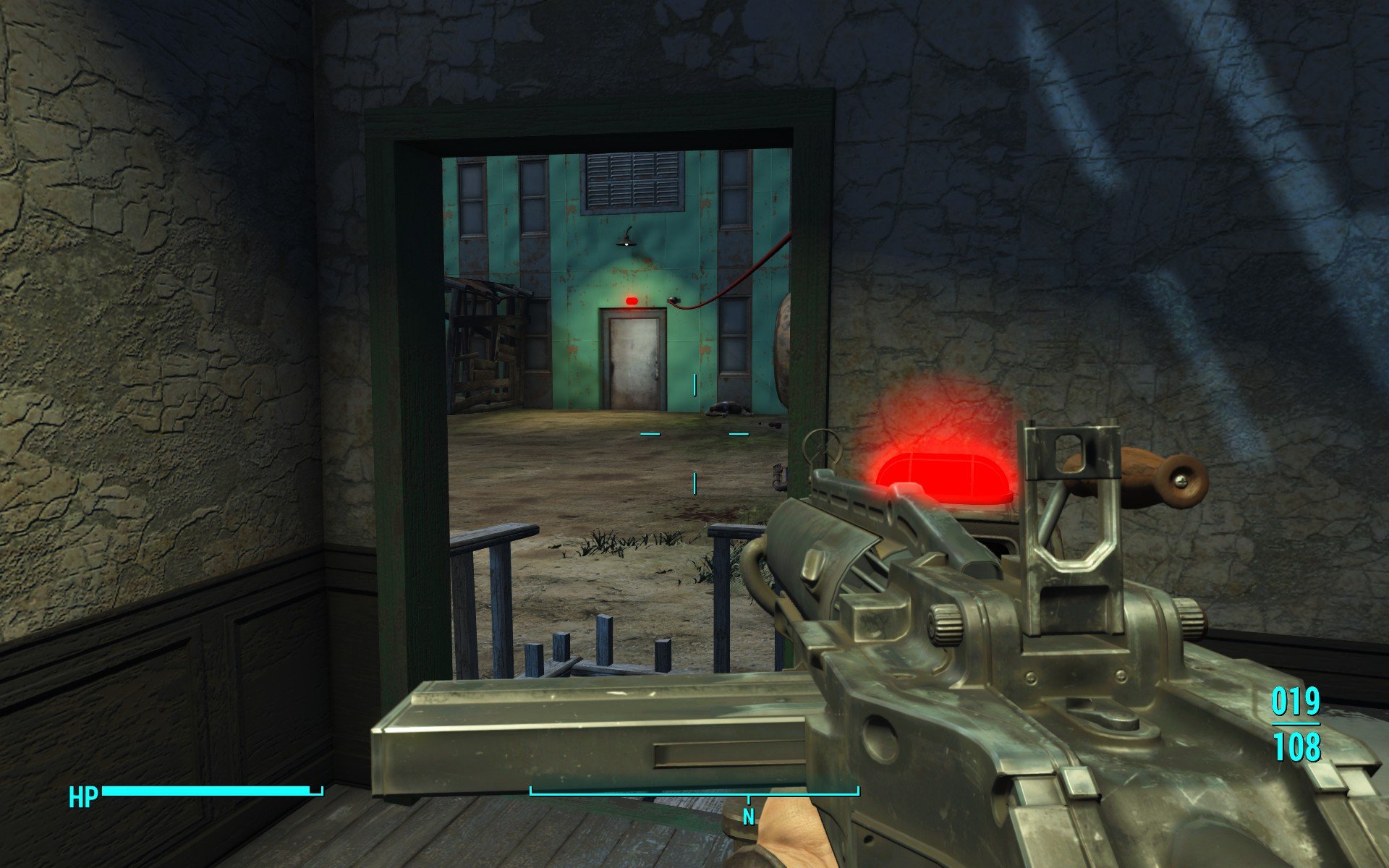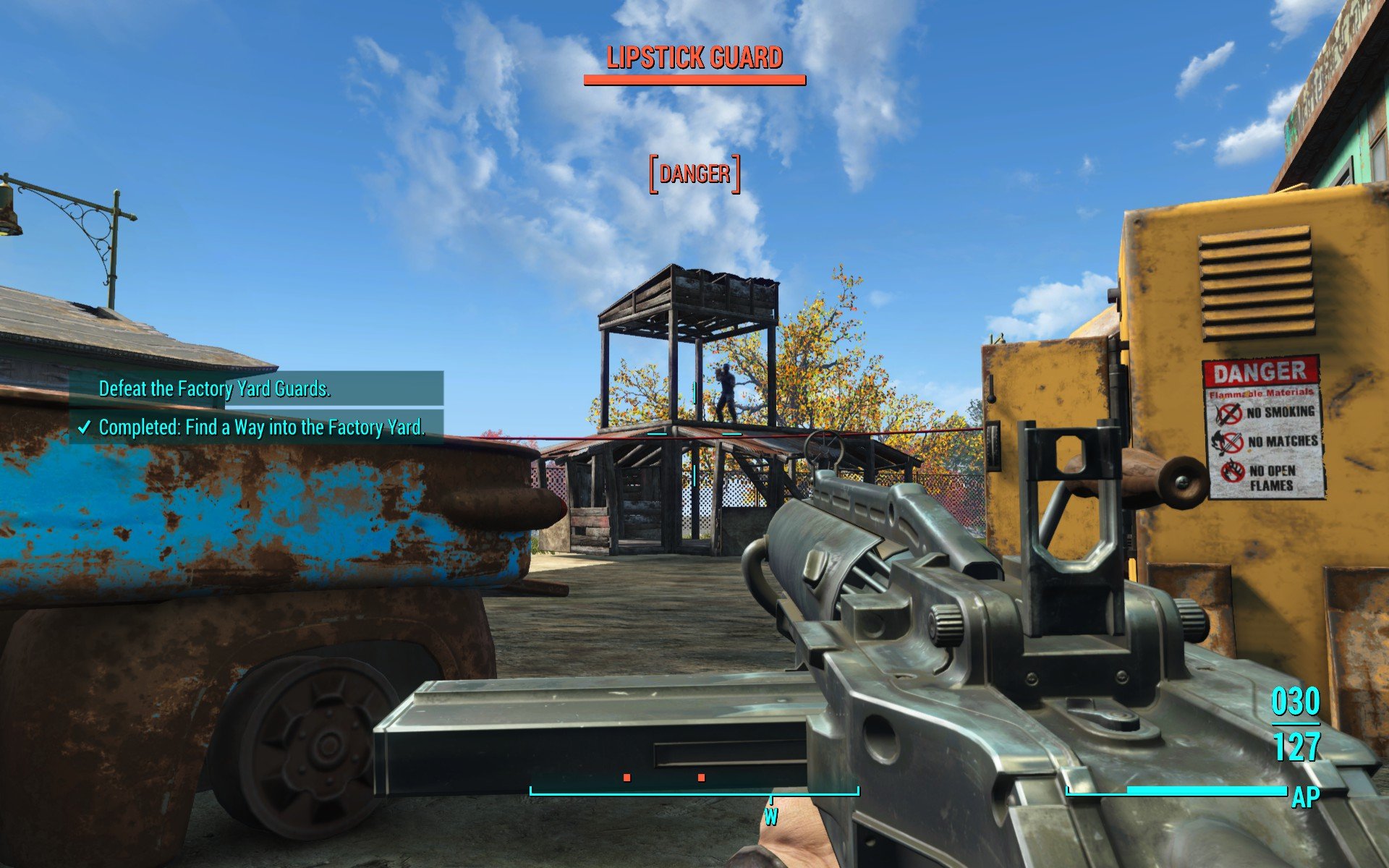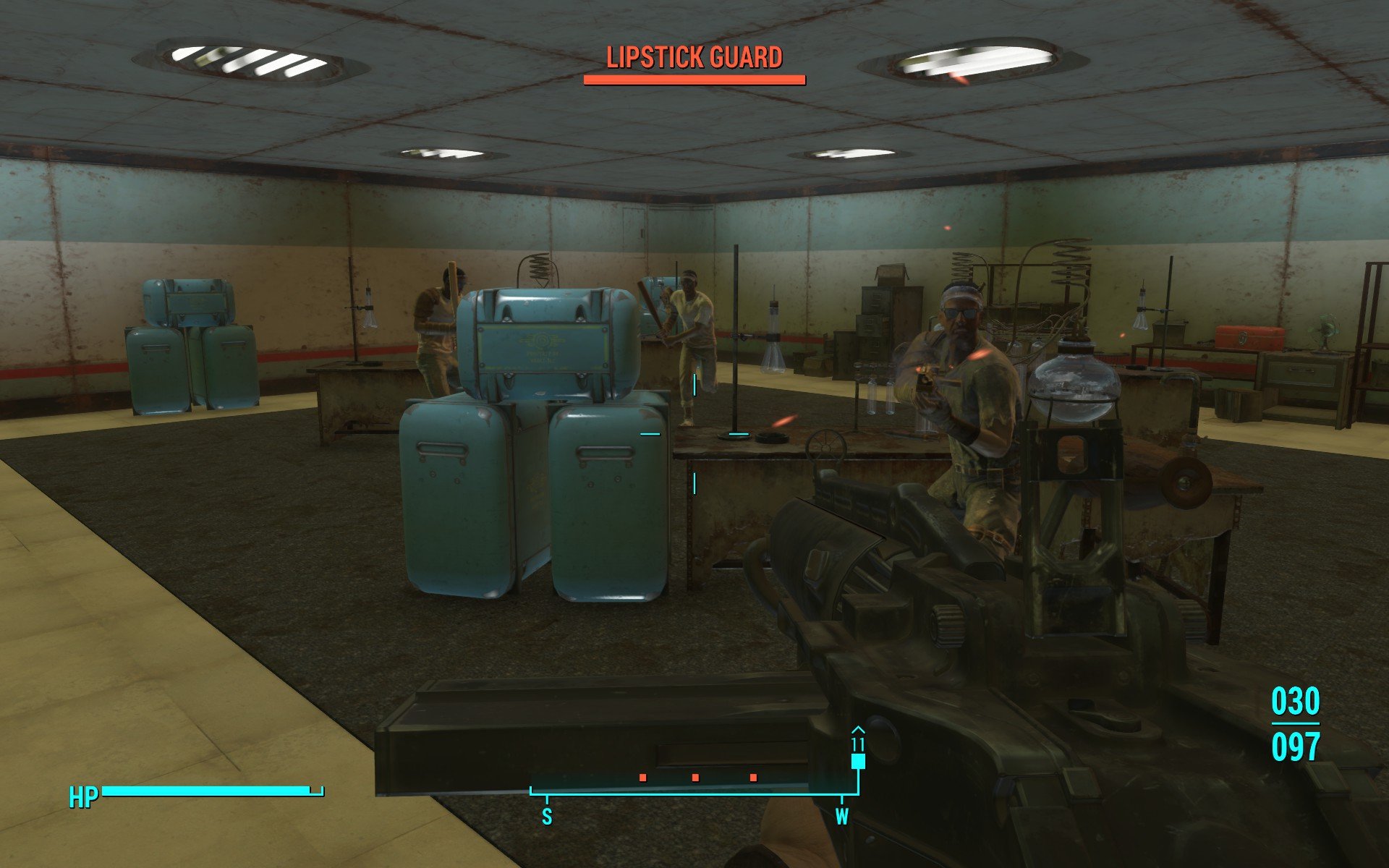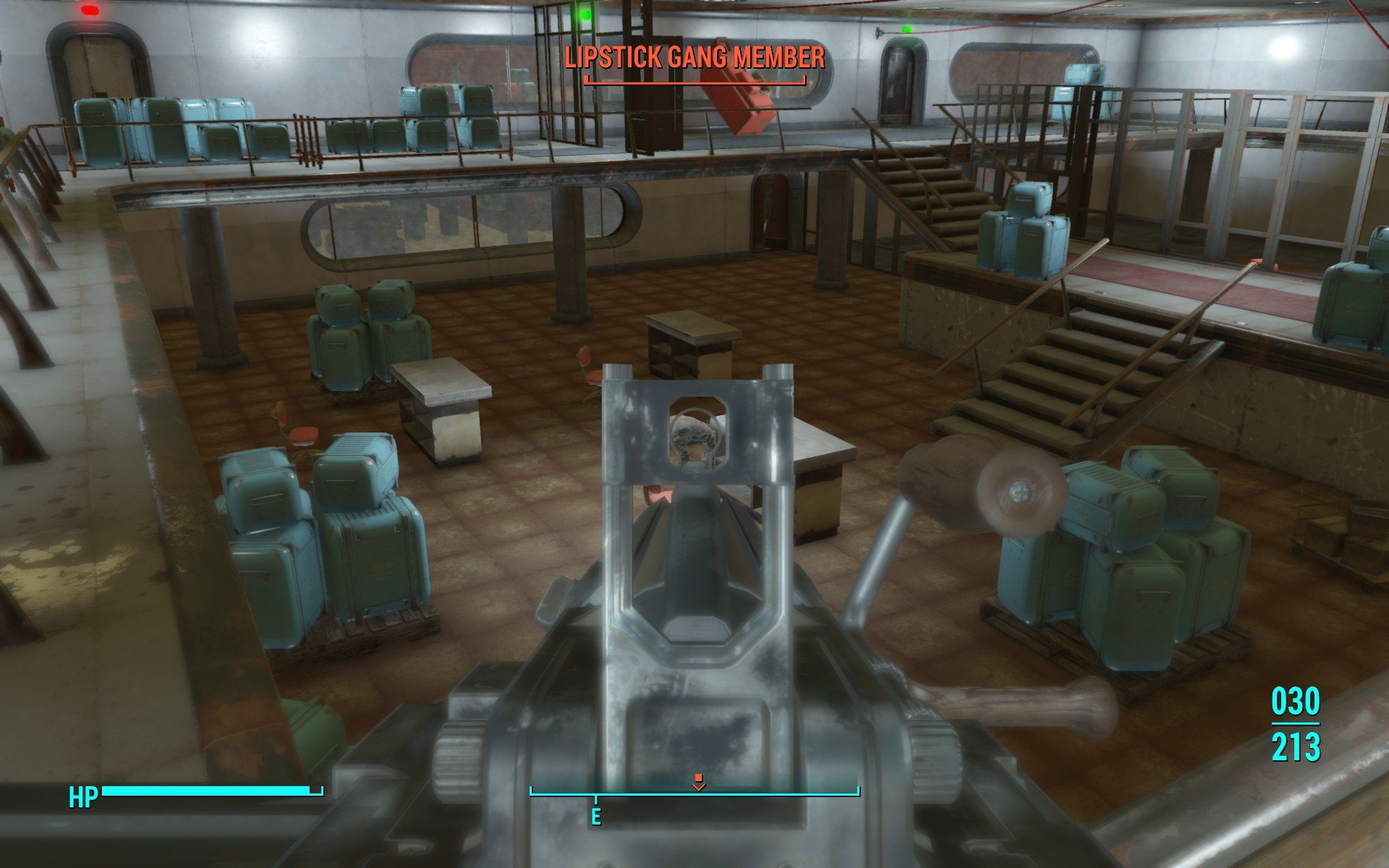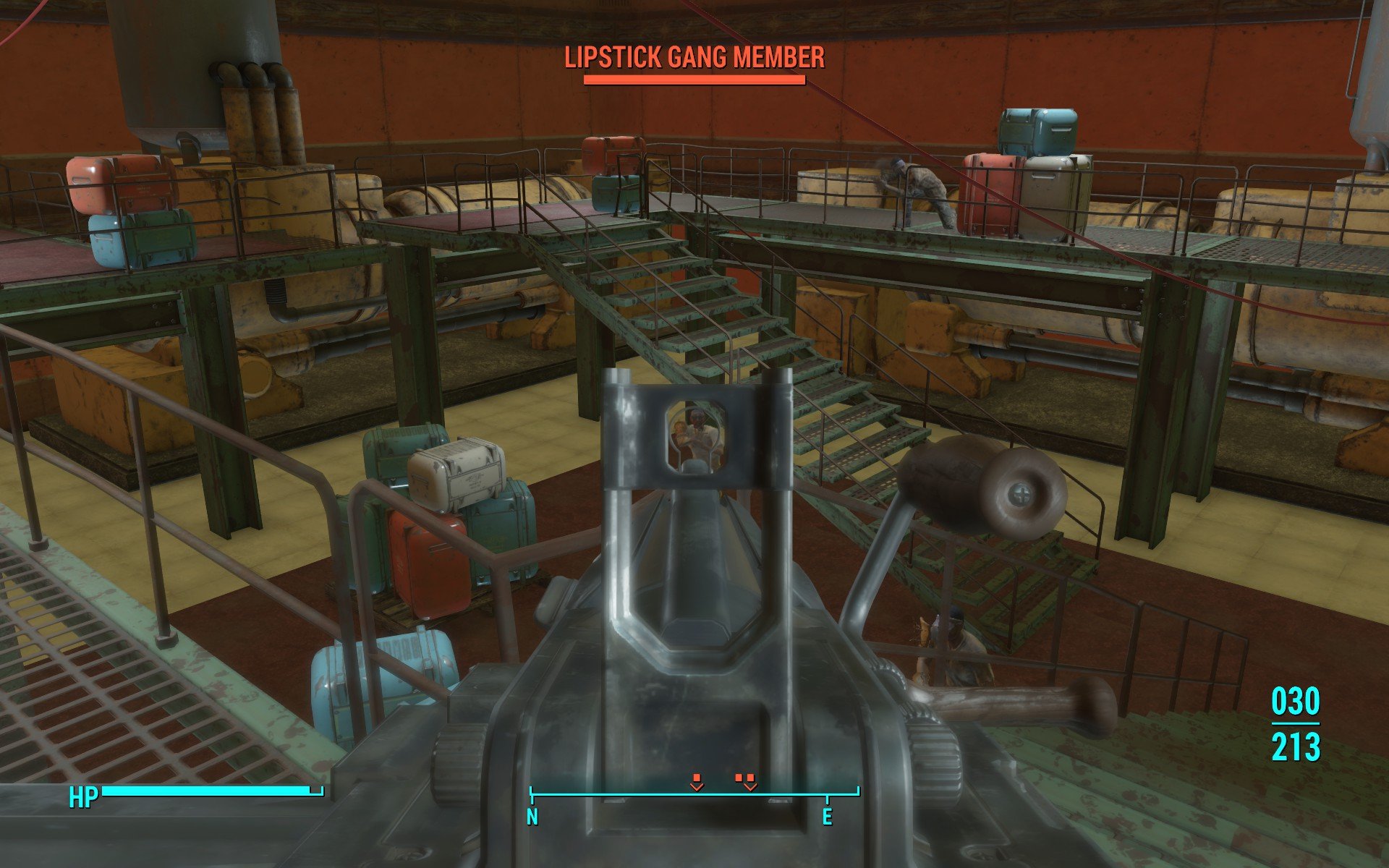Chems by the Lake
Project Summary
Role: Quest Designer.
Editor: Fallout 4 Creation Kit
Process: Iterative Agile Spiral with Milestones
Tools: Adobe Illustrator for Maps, Microsoft Word for Level Design Document and ReadMe Documentation.
Design Goals
Support the Narrative
Guide the Player
Spatially Aware Combat
Narrative Summary:
The waterside town of Lakeland has a chem addiction problem. Sheriff Debbie sets out to find a mercenary to help her take on the group of raiders she claims are responsible. However, the situation isn’t as cut and dry as the sheriff makes it seem.
Design Goals
Support
the
Narrative
Guide
the
Player
Spatially
Aware
Combat
Support the Narrative
To support the narrative, I made design choices that help reinforce the themes of the quest.
I gave Lakeland a small town feel by having the factory be a focal point in the distance, mirroring the real-world concept of a town built around a business that the town relies on for economic support.
The clinic and sheriff’s office are focal points in the community supporting the narrative concept of needing certain medications for public health while dealing with the fallout of when those medications are misused.
I also included a side quest that supported the main narrative by introducing a side quest that had the player investigate the disappearance of a local who volunteered to test the new chems that the factory was making.
An important thing I wanted to do was give the player as many visual cues as possible to help guide them without being heavy handed.
The first way I did this was by placing landmark assets to help draw the player's attention. Debbie's tent area, the clinic in Lakeland, and the factory on the hilltop all help draw the player to key areas.
Next I used visual pathways and physical boundaries. While it resembles something you'd see in reality, many common assets are used to push the player in an intended direction. Fencing, cliffs, doorways, trees, and terrain textures were utilized to have the player follow the path I intended.
There's even a moment in which the player encounters a worker from the factory who's attacked by addicts as he's making a delivery. Once the combat sequence ends he jogs back to the factory to allow the player to see where to go next.
This was combined with in-game systems like terminals and lockpicking to encourage the player to interact with the game world. Terminals were connected to doors with color changing lights above them to indicate where the player should go next, and which paths were open.
I also put safeguards in place to ensure that if the player did go off the intended path, they didn't trigger anything before they completed other aspects of the quest.
Guide the Player
The combat in the level adapts to the situation the player finds themselves in. The two exterior sequences are very different. One is a simple shootout with two addicts. The second is a skirmish with the exterior guards of the factory.
As you get into the factory, you're back in simpler combat on the first floor. This involves close range guns but also enemies charging with melee weapons since it's a flat space.
As you reach the second floor, there's an introduction to simple ranged combat with a couple of attackers on the floor below to utilize the verticality.
Once inside the factory floor room, the combat increases in difficulty as you make your way to the security room to set up the final combat sequence.
As they enter the space one more time, the player should see that they've slowly opened up the central space by opening gates and doors, which allows the player and enemies to move freely through the space while utilizing simple and circular cover.


